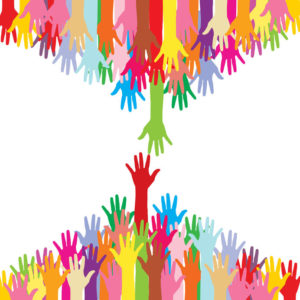INformation Hub
TRANSITION: Cultural Competency Resources
TRANSITION: Cultural Competency Resources
A RAISE Center Resource Collection
 Reinforcing Resilience: How Parent Centers Can Support American Indian and Alaska Native Parents — This brief describes the importance of resilience in Native communities and suggests ways that Parent Centers can share the skills that reinforce resilience with Native parents of youth with disabilities. Parent Centers can also share NAPTAC’s Resiliency message written for youth, available at parentcenterhub.org/native-resilience-youth.
Reinforcing Resilience: How Parent Centers Can Support American Indian and Alaska Native Parents — This brief describes the importance of resilience in Native communities and suggests ways that Parent Centers can share the skills that reinforce resilience with Native parents of youth with disabilities. Parent Centers can also share NAPTAC’s Resiliency message written for youth, available at parentcenterhub.org/native-resilience-youth.
Reaching Out to American Indian and Alaska Native Youth with Disabilities — In this guide, NAPTAC explores how Parent Centers might plan and conduct outreach to Native American and Alaska Native (AI/AN) youth with disabilities. The guide is meant to support Parent Centers in addressing one of their most recent priorities—that is, to connect directly with youth who have disabilities and to increase their capacity to be effective self-advocates.
The State of Native Education: Facts for Parent Centers — This brief shares key findings from the National Indian Education Study (NIES) report released in March 2017. Understanding the academic performance of American Indian and Alaska Native (AI/AN) students in reading and mathematics, as well as their exposure to Native culture in school and in the home, provides Parent Center staff with important contextual information that may contribute to outreach initiatives with AI/AN parents and communities.
Educating Native Students, Then and Now — NAPTAC’s summary of “Native Nations and American Schools: The History of Natives in the American Education System” helps Parent Centers better understand the historical context and current state of Native education; and inform their work with families who are American Indian/Alaska Native (AI/AN).
Developing an Understanding of American Indians/and Alaska Natives: Historical Trauma — In this brief, NAPTAC examines what historical trauma is and describes its monumental impact on Native people, culture, and health. Parent Centers can use this information to deepen their understanding of Native communities and to inform outreach and training activities.
Quick Guide: Culturally and Linguistically Diverse Youth and Secondary Transition Manual
A Partner Resource | This guide from NTACT explains how educators, researchers, and policy makers can be mindful of social, political, economic, educational, and cultural context when assisting Culturally and Linguistically Diverse (CLD) youth with disabilities transition to positive post-school outcomes.
SOURCE ARTICLE: Center for Parent Information and Resources
Give us a call at (727) 523-1130 or (800) 825-5736 or request a callback by clicking below.
